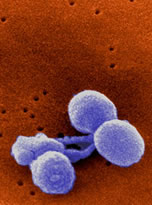Read and report vaccine reactions, harassment and failures.

Pneumococcal disease can affect anyone; however, some people may be at a greater risk for the disease. Risk factors include age and certain pre-existing medical conditions. Approximately 90 percent of invasive pneumococcal disease occurs in adults. Adults considered most at risk of illness are persons 65 and older.
Persons between the age of 19 and 64 considered at highrisk of pneumococcal disease include:
- Smokers
- Chronic alcoholics
- Persons with chronic illness such as lung, heart, kidney, or liver disease
- Individuals with asthma
- Diabetics
- Persons who are immunocompromised (ie HIV positive)
- Individuals with cancer
- Persons without a functioning spleen
- Individuals with a cochlear implant or cerebrospinal leak
- Persons living in a nursing home, group home, or other long-term care facility.
Adults with living with chronic diseases such as diabetes, COPD, and chronic heart disease are at risk for developing invasive pneumococcal disease at any time during the year.
Children considered most at risk for developing invasive pneumococcal disease include young children under 2 and those who attend child care in a group setting. Additionally, Children with cochlear implants or cerebrospinal fluid leaks, chronic lung, health, kidney, or liver disease, sickle cell disease, and those with immunocompromising conditions are also consider to be at high risk for invasive disease.
African Americans, Alaskan Natives, and certain American Native groups have been found to have higher rates of pneumococcal disease.
IMPORTANT NOTE: NVIC encourages you to become fully informed about Pneumococcal and the Pneumococcal vaccine by reading all sections in the Table of Contents , which contain many links and resources such as the manufacturer product information inserts, and to speak with one or more trusted health care professionals before making a vaccination decision for yourself or your child. This information is for educational purposes only and is not intended as medical advice.



